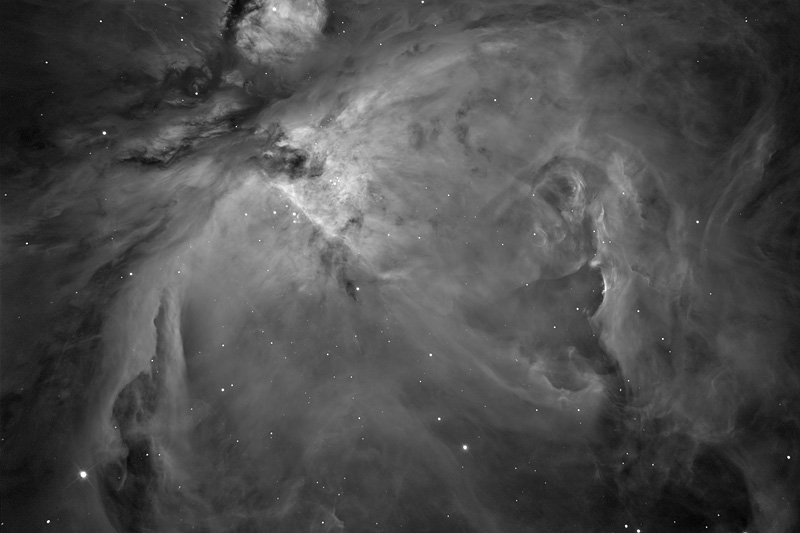
 |
The Great Orion Nebula |
|||||||||||||||||
About This PhotographThe Great Orion Nebula is a vast region of intense star formation. Massive, hot young stars at the center of the nebula — destined to lead short lives due to the rate at which they are consuming their fuel — are the illuminating sources for the clouds of hydrogen gas that we see here. Their intense ultraviolet light excites individual atoms in the nebula, causing them to fluoresce: each chemical element re-emits light in its own specific colors. This image was taken with a special filter that isolates the light emitted by hydrogen atoms. The Orion Nebula is about 40 light-years across (about 235 trillion miles), and lies at a distance of around 1,600 light-years from Earth. It is easily visible from even light-polluted locations as the middle "star" in Orion's club. | |||||||||||||||||
|
|||||||||||||||||